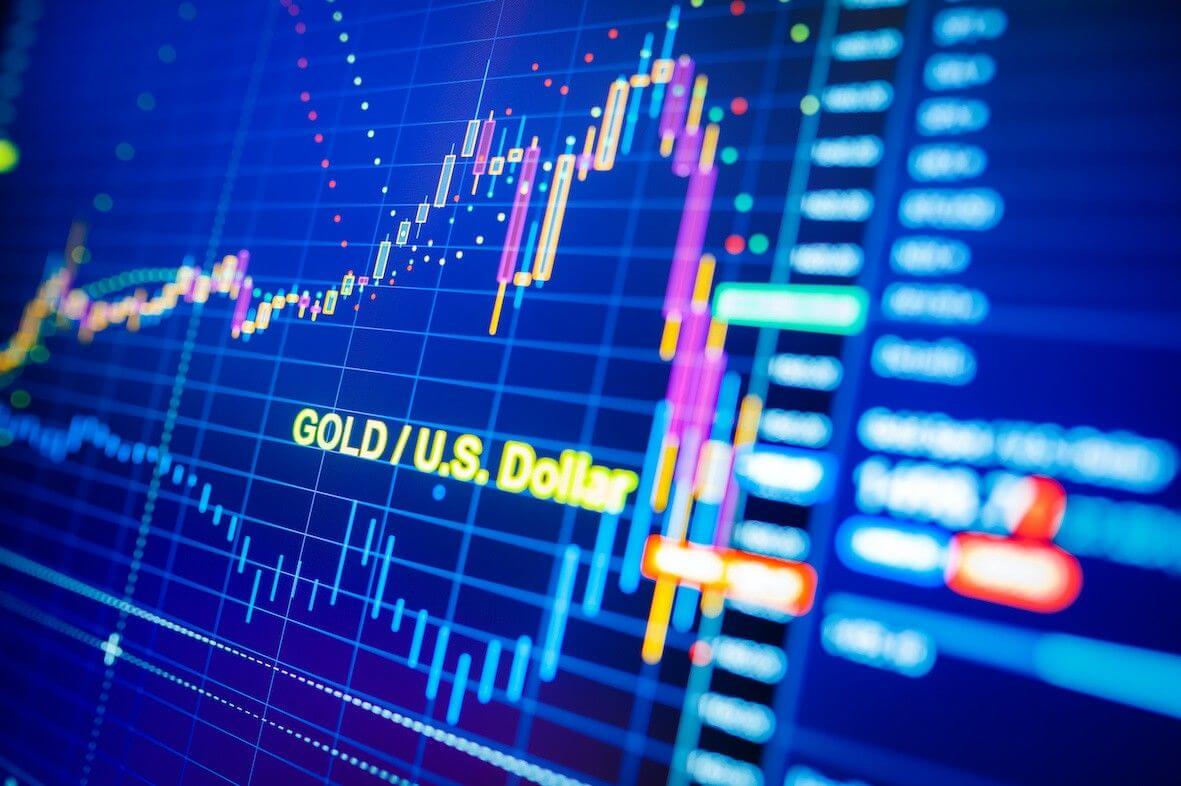Understanding the gold price, the gold market, taxes on gold, and gold industry regulations.
“If the world does well, gold will be fine. If the world doesn’t do well, gold will also do fine… but a lot of other things could collapse.” — Thomas Kaplan, billionaire, CEO of the asset management firm The Electrum Group.
How does the gold market work?
What is the gold market? Quite simply, it is the buying and selling of gold on a global scale. Because national markets can often be too volatile to maintain prices, the gold market has become a global market. Its price, called the spot price of gold, is the current market price. The same gold price is used around the world, and most often denominated in U.S. dollars. Like many markets, the gold market is influenced by supply and demand as well as the behavior of its investors.

About 75% of gold supply comes from mine production. But every year, the demand for gold tends to be higher than its annual mine production. To make up for this deficit, the actors of the industry resort to using recycled gold.
Recycled gold mainly comes from the jewelry industry. It requires treatment and refining in order for the metal to reach the level of purity necessary for its resale as an investment product.
The demand for gold is divided into four main sectors:
- jewelry
- investment
- central banks
- industry
These four sectors contribute to driving the gold market. Today, jewelry still represents 50% of the total demand, although its share has decreased in recent years. Investment demand has been rising sharply over the past thirty years.
Although jewelry remains one of the strongest source of demand for gold, it’s investment demand, mostly coming from private investors and central banks, that actually tends to have the most influence on the market.
As we have seen, investment demand tends to respond quite strongly to the ups and downs of the economy, and to follow investor sentiment closely. When investors are concerned about the economy, the demand for gold tends to increases, pushing the price up and thus sustaining the demand for gold.
The best way to understand the gold market is to follow leading economic news sources (Bloomberg, CNBC, Financial Times, Gold.org, etc.). You will learn to better analyze and understand the market’s upward (commonly called bull market) or downward phases (called bear market) and even try to anticipate its evolutions.
How does the price of gold work?
London Gold Fix, Fixing, London Bullion Market Association, important names to remember when defining the key concept of fixing the gold price.

While Gold has indeed a global market, it is also very centralized: the gold price or LBMA Gold Price, formerly the London Gold Fix, is determined by the LBMA (London Bullion Market Association) in London. The LBMA Gold Price is the price that serves as the global reference.
The setting of this price is also known as the fixing. Historically, the fixing was used to settle contracts between the various actors in the gold market. The resulting rate is now used as an informal basis for deciding the spot price, which is the price used in the market for buying and selling investment products such as bullion or coins and the price you will see on most, if not all, gold resellers.
The LBMA Gold Price is the price that serves as the global reference.
The LBMA gold price is determined twice a business day at 10:30 a.m. and 3:00 p.m. (London time) in US dollars. The resulting spot price is set by a group of financial institutions and the gold world and rarely differs from the LBMA gold price.
Although it can be expressed in different currencies, the LBMA gold price is the same around the world. The most common currency used to talk about the price of gold is the dollar, although it is not uncommon to see the price expressed in Euros, Swiss Francs, or British Pounds. Finally, the quantity to which the price of gold refers is the troy ounce which corresponds to 31.1 grams.
As we’ve explained above, the spot price is therefore the price as it appears on the market.
But why does the price of a product displayed at a gold dealer sometimes differs from the spot price?
It’s true, if you do a quick calculation of the price per ounce of a product you will notice that it is higher than the spot price of the day.
Don’t worry, this is quite normal, because the purchase price of a gold product is actually composed of two elements: the price of the metal and the premium (and the VAT in some countries).
The purchase price of a gold product is actually composed of two elements:
The price of the metal: This is the spot price, which is the price of a troy ounce (31.1 g) on the market at that specific moment.
The premium: This includes production and operating costs (production, scarcity, storage, etc.), as well as the dealer’s margin.
On GOLD AVENUE, you will find the price composition of each product by simply clicking on it. This way, you will be able to better understand the amount of the premium.
Taxes and regulations
If you are thinking about buying gold, at one point or another, you will have to understand how taxes work for the metal. Although it is a topic often feared by gold buyers, gold taxation is actually not very complex.
Throughout its life cycle, gold is subject to a variety of taxes: from mining to production to export. But the only taxes of interest to us here are those that come into play when buying and selling gold.
What are the taxes on gold?
The taxation of gold is often considered an obscure and complex one, but it is not. This reputation is essentially due to one simple factor: taxes and custom fees on gold often vary from country to country.
But, in reality, buyers only have to inquire about the taxes in force in the countries which concern them. Which, when taken case by case, are often less complex than they seem.
Indeed, investment gold is usually exempt from VAT, as is the case in most of Europe and Switzerland for example. While, a few countries still apply VAT on gold, their rates may vary depending on the product (coin, bullion, ingot). It is therefore important to be aware of the laws in effect in the country you buy and sell from as well as your country of residence.
Upon resale, most countries apply a form of tax on gold, generally known as capital gains tax. This means that the seller will have to pay back a portion of the capital gained on his product (the capital gain is the difference between the purchase price and the resale price of the product). The rate of the capital gains tax varies from country to country. For example:
- 36.2% for France (with an abatement of 5% per year of ownership from the third year and a total exemption from capital gains tax after 22 years of ownership).
- 12.5% for Italy (for private investors)
- 28% for the United States
- 18% for the UK
Some countries have several taxes in place that may apply when you resell your precious metals. This is the case in France for example, where the seller must choose the most advantageous system between:
- the capital gains tax (with a rate of 34.5% of the capital gain)
- the tax on precious metals (10.5% of the total sale price).
Finally, some countries like Switzerland, Belgium or Germany do not apply any tax on gold. Buying or selling gold in these countries is therefore exempt from taxation.
However, keep in mind that here as well, certain taxes such as customs duties may apply if, after reselling a gold product, you transfer the funds to a foreign country.
Gold regulations
If, as in most industries, there is no global regulatory body for gold, its activity remains highly regulated at the national and supranational levels.
From new regulations on exploration and mining to codes of conduct for a better functioning gold market, many initiatives are being taken to continuously improve all stages of the gold chain.
Regulations are already in place to promote responsible sourcing of gold, such as the Dodd-Frank Act in the United States, the European regulation on minerals from conflict zones, and the OECD Guide on the same subject.
The enforcement of these regulations encourages industry players to be very demanding and to pay attention to the continuous respect and monitoring of the ethical rules in place in their supply chains.
GOLD AVENUE pays particular attention to being fully compliant with the regulations in the gold sector as well as to offer full transparency. That is why we have designed complex compliance processes to prevent any risk of corruption, financial crimes, or money laundering. This is a way for us to ensure that our clients’ precious metals benefit from the highest level of security and stability.
Gold Lesson 1: Introduction to Gold








